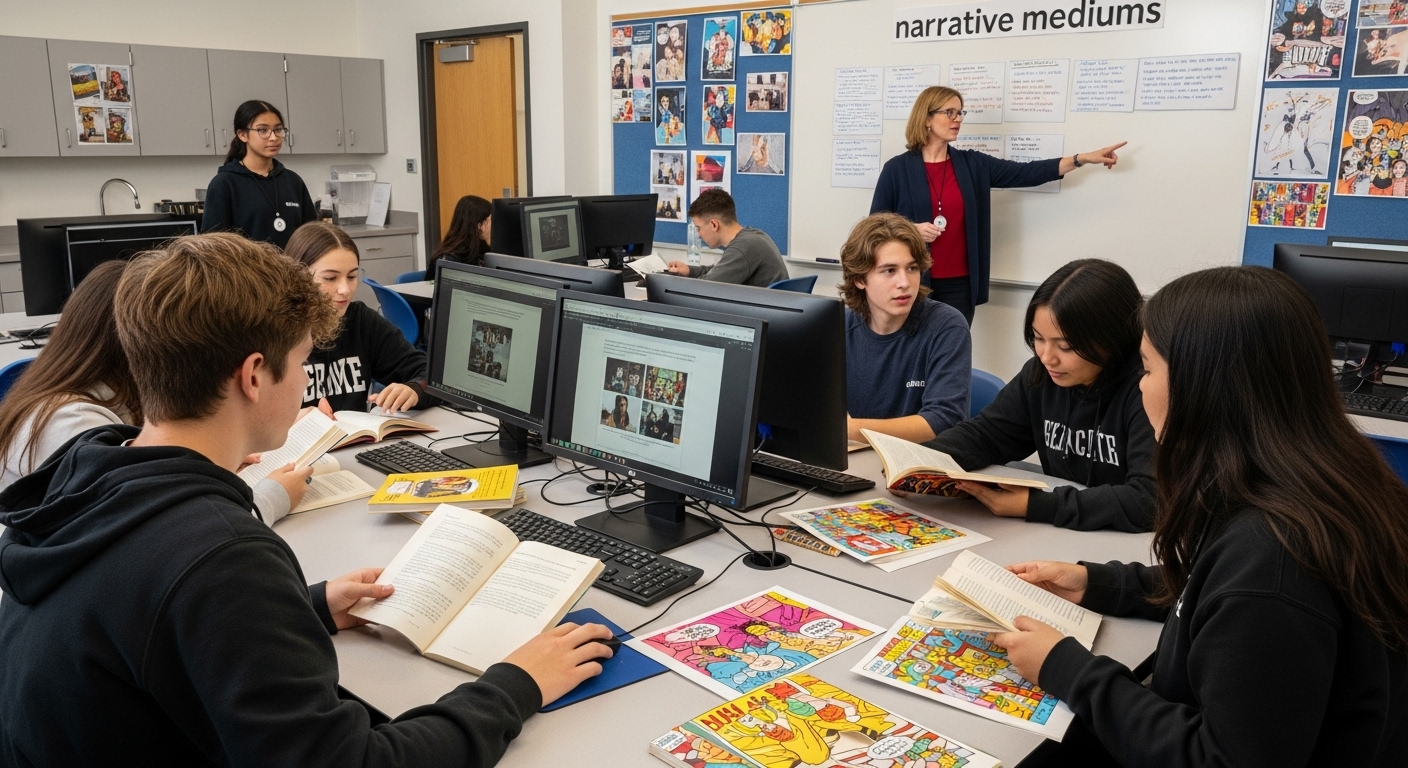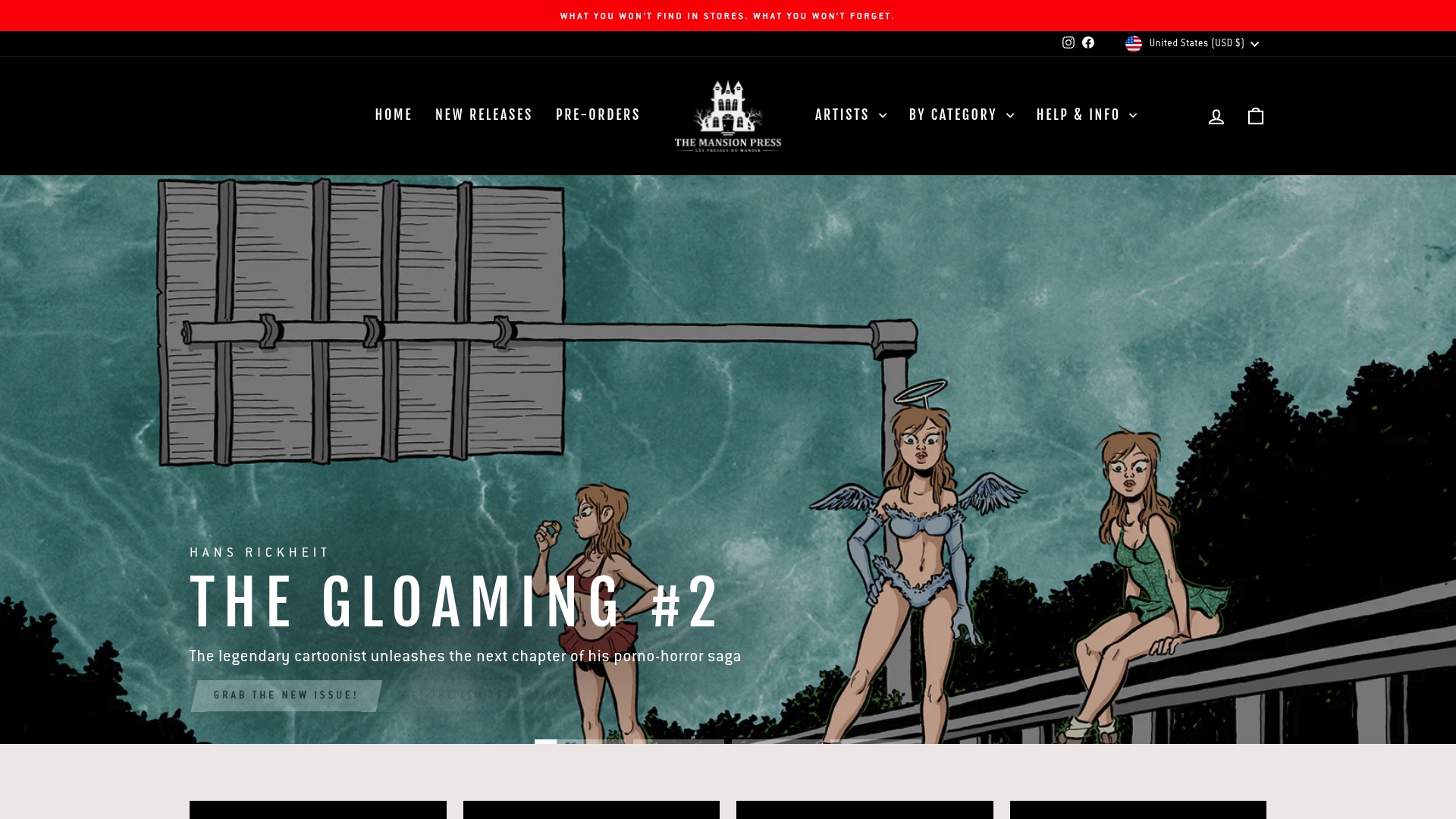Understanding Graphic Novels vs Traditional Novels
Graphic novels and traditional novels both tell stories, but they do it in completely different ways. Graphic novels mix art and words together, while traditional novels rely on pure text to spark your imagination. Here is something wild though. Graphic novels have now gained critical academic recognition after years of being dismissed as just for kids or comic fans. They are not just surviving alongside regular novels. They are actually changing what people consider to be great literature.
Table of Contents
- Defining Graphic Novels And Traditional Novels
- The Importance Of Narrative And Visual Storytelling
- Key Differences In Structure And Style
- Cultural Impact And Audience Reception
- The Future Of Graphic Novels And Traditional Novels
Quick Summary
| Takeaway | Explanation |
|---|---|
| Graphic novels blend visuals and text. | They use illustrations alongside words to deepen narratives and enhance reader engagement. |
| Traditional novels prioritize internal exploration. | These works rely on prose to convey character psychology and detailed scene descriptions, inviting deep reader interpretation. |
| Different storytelling techniques shape reader experiences. | Graphic novels utilize spatial composition and visual sequencing, while traditional novels focus on linear text and character development. |
| Both forms foster emotional connectivity. | They offer unique ways to evoke empathy, allowing readers to form strong bonds with characters and narratives. |
| Future narratives may merge traditional and graphic styles. | Technological advancements suggest both formats will increasingly combine strengths, creating collaborative and interactive storytelling opportunities. |
Defining Graphic Novels and Traditional Novels
Graphic novels and traditional novels represent two distinct narrative approaches in storytelling, each offering unique experiences for readers. While they share the fundamental goal of conveying stories, their methods of communication and artistic expression differ significantly.
Understanding Narrative Mediums
Traditional novels rely exclusively on written prose to create narratives, inviting readers to construct mental images through descriptive language. Words become the primary vehicle for character development, plot progression, and emotional exploration. Authors craft intricate worlds using carefully selected vocabulary, allowing readers to imagine scenes, characters, and environments through their own interpretive lens.
In contrast, graphic novels combine visual artwork with textual elements to tell stories. These works integrate illustrations, panel layouts, dialogue, and narrative captions to communicate complex narratives. Artists and writers collaborate to create immersive experiences where visual elements carry substantial storytelling weight.
Structural and Artistic Differences
Graphic novels possess a unique structural complexity that distinguishes them from traditional novels. Key characteristics include:
- Sequential art panels that guide reader progression
- Integrated visual storytelling techniques
- Dialogue and narrative text complementing visual imagery
- Dynamic representation of character emotions and actions
Traditional novels, by comparison, rely on linear textual descriptions. They encourage deeper internal exploration, allowing readers to delve into characters’ psychological landscapes through detailed prose. The absence of visual representation means readers must actively engage their imagination to interpret narrative scenes.
Both narrative forms offer rich, compelling storytelling experiences, demonstrating that artistic expression transcends medium limitations.
Below is a comparison table highlighting the core differences between graphic novels and traditional novels in terms of narrative technique, structure, and reader experience.
| Feature | Graphic Novels | Traditional Novels |
|---|---|---|
| Primary Medium | Visual art combined with text | Pure written prose |
| Storytelling Method | Panels, illustrations, dialogue, and captions | Descriptive language and narrative prose |
| Reader Engagement | Immediate visual immersion and interpretation | Imaginative creation of scenes and characters |
| Structure | Sequential art; varied panel layout | Linear text; chapter-based structure |
| Emotional Expression | Visual emotion (color, facial expression, composition) | Internal monologue and nuanced linguistic description |
| Accessibility | Lower language barrier; suitable for diverse audiences | Requires more advanced language skills |
| Character Development | Visual cues plus succinct dialogue | Extended internal thought and background |
The Importance of Narrative and Visual Storytelling
Narrative and visual storytelling represent powerful communication methods that transcend traditional boundaries of artistic expression. These approaches enable creators to convey complex emotional landscapes, social experiences, and human perspectives through diverse mediums.
Emotional and Psychological Connectivity
Storytelling serves as a profound mechanism for human connection, allowing audiences to experience worlds and perspectives beyond their immediate reality. According to psychological research from Stanford University, narratives activate multiple brain regions, creating empathy and emotional engagement that traditional information delivery methods cannot achieve.
Both graphic and traditional novels leverage this psychological principle, enabling readers to develop deep emotional connections with characters and storylines. Visual storytelling adds another layer of emotional interpretation through artistic representation, while textual narratives rely on nuanced language to evoke similar psychological responses.
Representational Complexity
Visual and narrative storytelling offer unique advantages in representing complex social experiences and marginalized perspectives. Key strengths include:
- Ability to communicate nuanced emotional states
- Representation of intersectional experiences
- Breaking traditional narrative constraints
- Providing alternative perspectives on historical events
Graphic novels particularly excel at representing experiences that might be challenging to articulate through text alone. Artists can utilize visual metaphors, color palettes, and panel compositions to communicate intricate emotional and social landscapes that words might struggle to capture.
Traditional novels, conversely, provide deep psychological exploration through detailed prose, allowing readers to inhabit characters’ internal worlds with remarkable intimacy. Both mediums contribute to a broader understanding of human experience, challenging readers to expand their empathetic capacities and engage with diverse narratives.
This table outlines the unique ways graphic novels and traditional novels approach emotional connection and representation of complex themes, as discussed in the article.
| Aspect | Graphic Novels | Traditional Novels |
|---|---|---|
| Emotional Connectivity | Uses artwork and color for immediate impact | Fosters empathy via detailed psychological prose |
| Representation Complexity | Excels with visual metaphors and social nuance | In-depth internal exploration via language |
| Accessibility of Perspective | Visual storytelling can transcend language | Language-focused, may limit accessibility |
| Social Experience Portrayal | Effective for intersectional and marginalized stories | Detailed background and introspection |
Key Differences in Structure and Style
Graphic novels and traditional novels employ distinctly different structural approaches and artistic styles, each offering unique reader experiences that fundamentally transform narrative consumption and interpretation.
Spatial and Compositional Design
Research from the Comics Studies Society reveals that graphic novels utilize spatial composition as a critical storytelling mechanism. Unlike traditional novels, which progress linearly through text, graphic novels leverage panel layouts, visual sequencing, and graphic design to communicate narrative progression.
Panel arrangements create complex reading experiences where visual hierarchy, size, and placement guide reader interpretation. An oversized panel might signify emotional intensity, while smaller panels could represent fragmented memories or rapid temporal shifts. This visual grammar allows graphic novelists to communicate multilayered narrative information simultaneously.
Narrative Exposition and Character Development
Traditional and graphic novels diverge significantly in character and plot development strategies. Key distinctions include:
- Character representation through visual versus textual description
- Narrative pacing controlled by page layout versus textual flow
- Emotional communication through artistic expression versus linguistic nuance
- Temporal manipulation through visual sequencing versus prose description
Traditional novels invest deeply in internal monologue and psychological exploration, using extensive prose to reveal character motivations. Graphic novels, in contrast, communicate complex emotional states through artistic choices like facial expressions, body language, color palette, and visual metaphors.
Both mediums share the fundamental goal of compelling storytelling but achieve this through radically different artistic languages.
![]() Graphic novels offer immediate visual immersion, while traditional novels invite prolonged intellectual and imaginative engagement, demonstrating the rich diversity of narrative expression.
Graphic novels offer immediate visual immersion, while traditional novels invite prolonged intellectual and imaginative engagement, demonstrating the rich diversity of narrative expression.
Cultural Impact and Audience Reception
Graphic novels and traditional novels have profoundly transformed cultural landscapes, challenging established literary boundaries and expanding artistic representation across diverse communities and narrative experiences.
Shifting Literary Perceptions
Academic research from the Modern Language Association demonstrates that graphic novels have systematically dismantled traditional literary hierarchies. Once marginalized as a niche or juvenile medium, graphic novels now receive critical academic recognition, challenging long-standing perceptions about storytelling legitimacy.
Traditional novels continue to maintain significant cultural authority, representing deeply intellectual and nuanced narrative traditions. However, graphic novels have emerged as powerful platforms for marginalized voices, offering visual storytelling mechanisms that transcend linguistic and cultural barriers more effectively than traditional prose.
Audience Engagement and Accessibility
Both narrative forms engage audiences through distinct yet complementary approaches. Key audience engagement characteristics include:
- Diverse demographic appeal across age groups
- Multilayered narrative comprehension
- Reduced language barriers through visual communication
- Enhanced emotional connectivity
Graphic novels particularly excel in making complex narratives accessible to broader audiences. Visual storytelling can communicate challenging social themes, historical experiences, and personal narratives with immediate visual impact. Traditional novels, conversely, provide deeper intellectual exploration, inviting readers to invest sustained cognitive energy in understanding nuanced narrative landscapes.
Both mediums reflect ongoing cultural conversations, demonstrating storytelling’s remarkable capacity to bridge understanding, challenge perspectives, and create meaningful human connections across diverse experiences and backgrounds.

The Future of Graphic Novels and Traditional Novels
The evolving landscape of narrative media suggests a dynamic future where graphic novels and traditional novels will continue to adapt, intersect, and challenge existing storytelling paradigms. Technological advancements and shifting cultural perspectives are reshaping how audiences consume and interact with narrative forms.
Technological Integration and Hybrid Formats
Digital media research from the Pew Research Center indicates emerging trends of narrative convergence. Digital platforms are enabling innovative storytelling approaches that blend traditional and graphic novel techniques, creating immersive, interactive narrative experiences.
Emergent technologies like augmented reality and interactive digital platforms are transforming both graphic and traditional novels. Authors and artists can now create multilayered narrative experiences that dynamically respond to reader interactions, blurring boundaries between static and interactive storytelling.
Expanding Narrative Diversity
The future of narrative forms promises unprecedented representation and creative exploration. Key emerging trends include:
- Increased global storytelling perspectives
- Hybrid narrative techniques combining visual and textual elements
- Cross-cultural collaborative storytelling platforms
- Enhanced accessibility through digital and multimedia formats
Graphic novels are particularly positioned to lead innovative narrative experiments, offering visual languages that transcend traditional linguistic and cultural barriers. Traditional novels will likely continue evolving, incorporating more experimental narrative structures and engaging with digital storytelling techniques.
Both narrative forms represent dynamic, living artistic expressions that continually reimagine how humans communicate complex experiences, emotions, and perspectives. The future promises not competition, but rich, collaborative narrative ecosystems that celebrate diverse storytelling approaches.
Discover the Artistry Behind Every Narrative
Are you torn between the immersive visuals of graphic novels and the rich inner worlds of traditional novels? This article highlights how both mediums shape your journey as a reader, exploring narrative structure, emotional connection, and visual storytelling. If you crave unique stories that blend powerful imagery with deep narrative, you may feel frustrated by the limited selection in mainstream stores. This is where The Mansion Press transforms your experience, bringing you exclusive artbooks, stunning comics, and original works from independent artists that go beyond conventional choices.

Experience the difference today. Browse The Mansion Press collection and uncover art-centered products you won’t find anywhere else. Shop collector’s editions and limited releases that celebrate creativity at its best. Each purchase supports artists and delivers stories told through both words and inspiring visuals. Ready to redefine your shelf? Visit The Mansion Press now and elevate your collection before the next release becomes a sell-out.
Frequently Asked Questions
What is the difference between graphic novels and traditional novels?
Graphic novels combine visual artwork with text to tell stories, using panels, illustrations, and dialogue. Traditional novels focus solely on written prose without visual components, inviting readers to imagine characters and scenes through descriptive language.
How do emotional connections differ between graphic novels and traditional novels?
Both forms of storytelling foster emotional connectivity, but graphic novels use visual elements like colors and facial expressions to enhance emotional interpretation, while traditional novels rely on nuanced language and internal monologues to explore characters’ psychological landscapes.
Can graphic novels effectively convey complex social themes?
Yes, graphic novels excel at representing complex social experiences through visual storytelling mechanisms, allowing for nuanced emotional states and alternative perspectives on historical events that might be challenging to articulate solely through text.
How are the structural elements different in graphic novels compared to traditional novels?
Graphic novels utilize sequential art panels and visual sequencing to guide reader interpretation, while traditional novels follow a linear text structure. This difference allows graphic novels to communicate multilayered narrative information simultaneously, while traditional novels invite deeper internal exploration through detailed prose.


